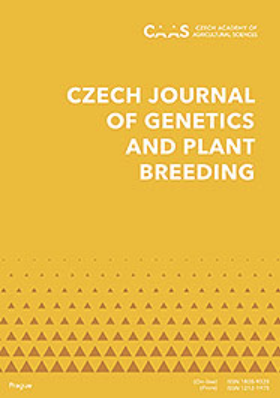Phylogenetics of native conifer species in Vietnam based on two chloroplast gene regions rbcL and matK
IF 1.8
4区 农林科学
Q3 AGRONOMY
引用次数: 6
Abstract
We used two chloroplast gene regions (matK and rbcL) as a tool for the identification of 33 local conifer species. All 136 sequences, 101 newly generated (14 species for gene matK; 16 species for gene rbcL) and 35 retrieved from the GenBank, were used in the analysis. The highest genetic distance (matK region) was recorded between the species in Cupressaceae with an average of 5% (0.1–8.5), Podocarpaceae with an average of 6% (0–8.5), Taxaceae with an average of 5% (0.2–0.5) and Pinaceae with an average of 20.4% (0.8–54.1). The rbcL region showed a low genetic distance between the species in Cupressaceae 2% (0–3.3), Podocarpaceae 3% (0.6–3.4), Taxaceae 1% (0–2.1) and Pinaceae 1.2% (0–5.82). The phylogenetic analyses using the Maximum likelihood (ML) and Bayesian inference (BI) bootstrap values obtained at the branching nodes of each species ranged from 62 to 100% (Maximum likelihood bootstrap – MLBS and Bayesian posterior probabilities – BPP) for the matK gene; from 66 to 100% (MLBS) and 60 to 100% (BPP) for the rbcL region. The rbcL region was not identified between the species of Taxaceae and Cephalotaxaceae. The matK gene region was very clear in the different species among the families (Cupressaceae, Podocarpaceae, and Cephalotaxaceae) and unsuitable for identifying closely related species in Amentotaxus (Taxaceae) and Pinus (Pinaceae). The gene (matK) is a useful tool as a barcode in the identification of conifer species of Cupressaceae, Podocarpaceae, and Cephalotaxaceae in Vietnam.基于rbcL和matK两个叶绿体基因区的越南本土针叶树物种系统发育遗传学
利用两个叶绿体基因区(matK和rbcL)作为鉴定工具,对33种本地针叶树进行了鉴定。全部136个序列,101个新生成(基因matK 14种;16种为rbcL基因,35种来自GenBank。遗传距离(matK区)最高的是柏科,平均为5%(0.1 ~ 8.5),豆科平均为6%(0 ~ 8.5),红豆杉科平均为5%(0.2 ~ 0.5),松科平均为20.4%(0.8 ~ 54.1)。rbcL区柏科为2%(0 ~ 3.3),豆科为3%(0.6 ~ 3.4),红豆杉科为1%(0 ~ 2.1),松科为1.2%(0 ~ 5.82),种间遗传距离较低。利用最大似然(ML)和贝叶斯推理(BI)自举值对每个物种分支节点的matK基因进行系统发育分析,其范围为62% ~ 100%(最大似然自举- MLBS和贝叶斯后验概率- BPP);rbcL区域为66 - 100% (MLBS)和60 - 100% (BPP)。红豆杉科与头杉科植物间未发现rbcL区。matK基因在不同科(柏科、podocarpace科和Cephalotaxaceae)的不同种中非常清晰,不适合在红豆杉科(Amentotaxus)和松科(Pinus)中鉴定近缘种。该基因(matK)是鉴定越南柏科、石竹科、头杉科针叶树种的有效条形码工具。
本文章由计算机程序翻译,如有差异,请以英文原文为准。
求助全文
约1分钟内获得全文
求助全文
来源期刊

Czech Journal of Genetics and Plant Breeding
Agricultural and Biological Sciences-Plant Science
CiteScore
2.20
自引率
0.00%
发文量
25
审稿时长
>12 weeks
期刊介绍:
Original scientific papers, critical reviews articles and short communications from the field of theoretical and applied plant genetics, plant biotechnology and plant breeding. Papers are published in English.
 求助内容:
求助内容: 应助结果提醒方式:
应助结果提醒方式:


